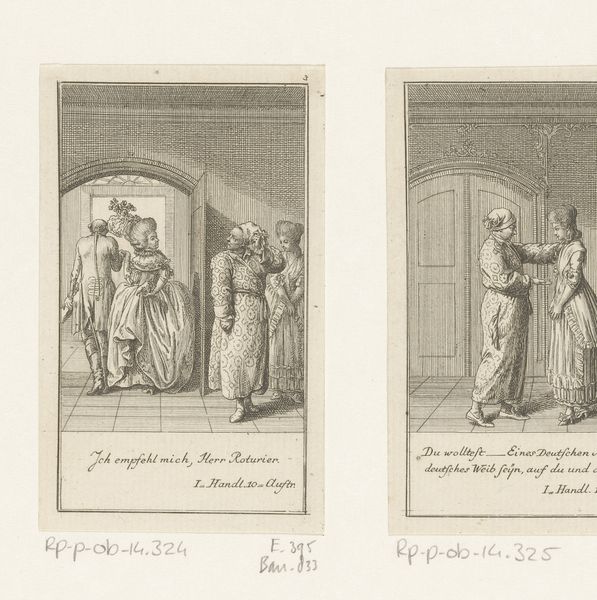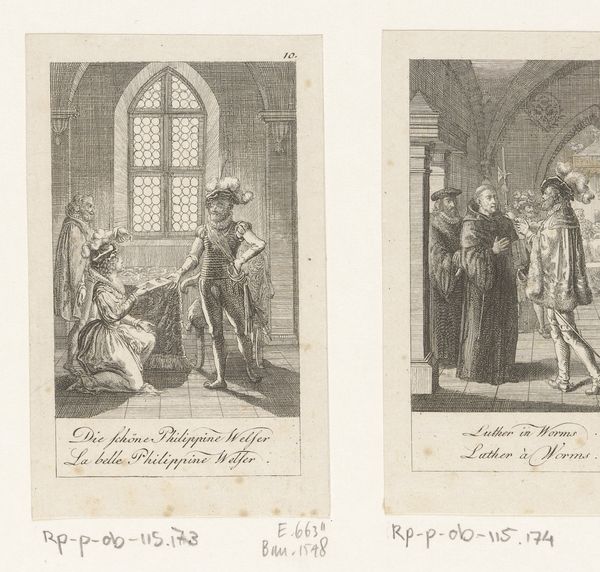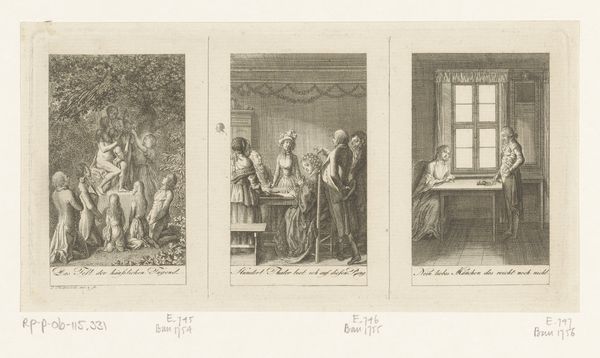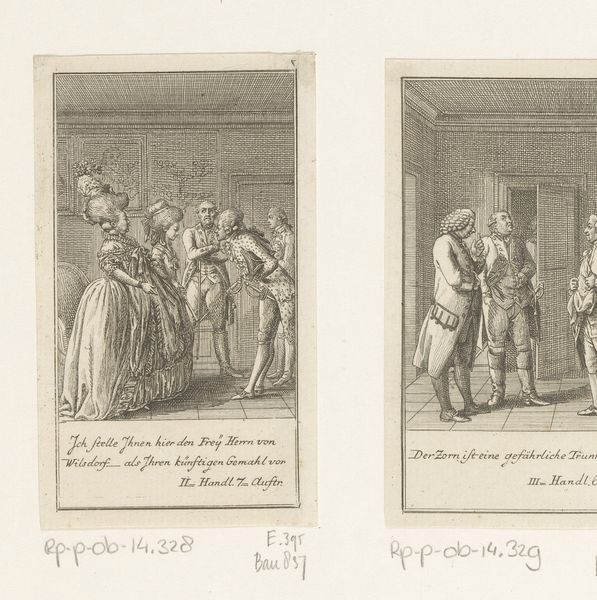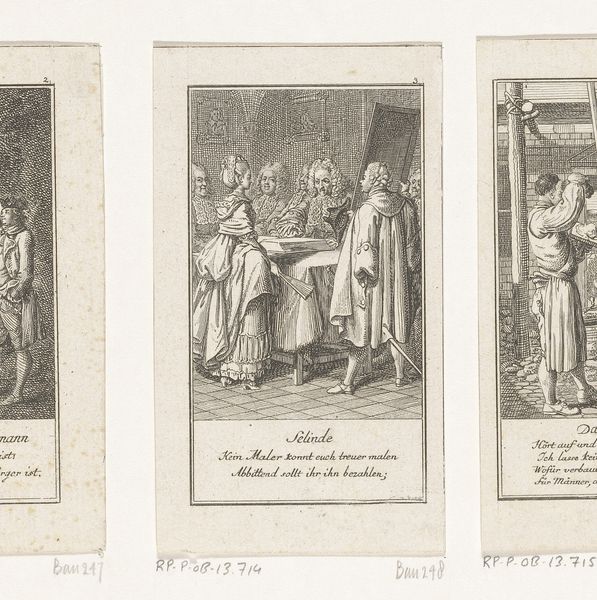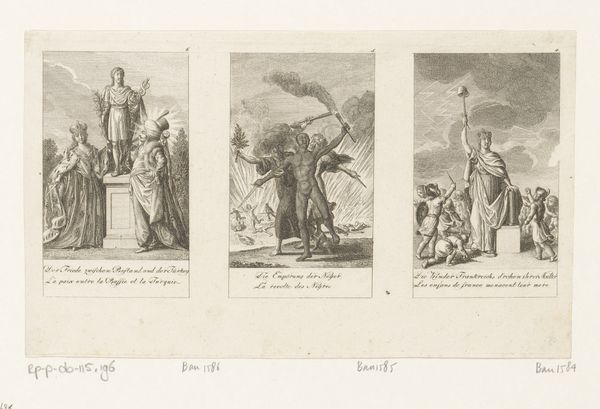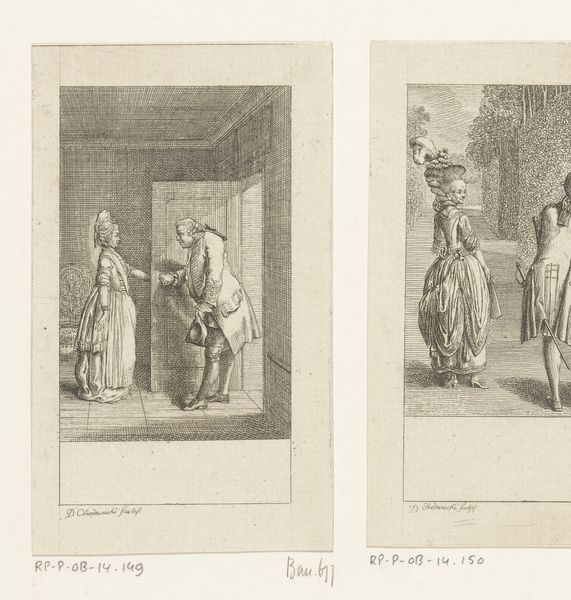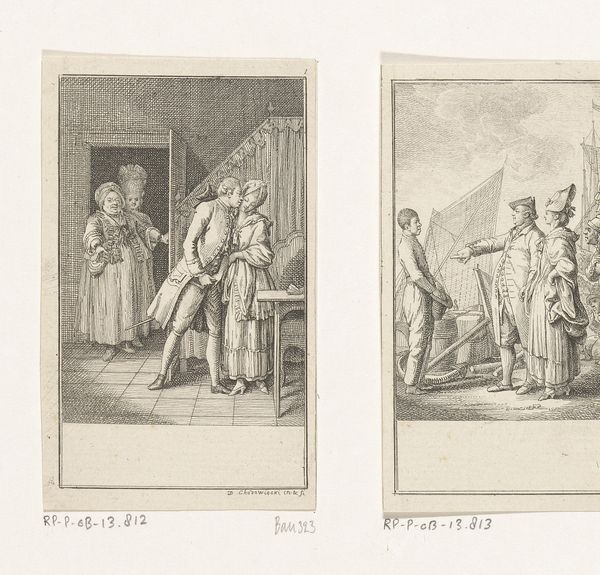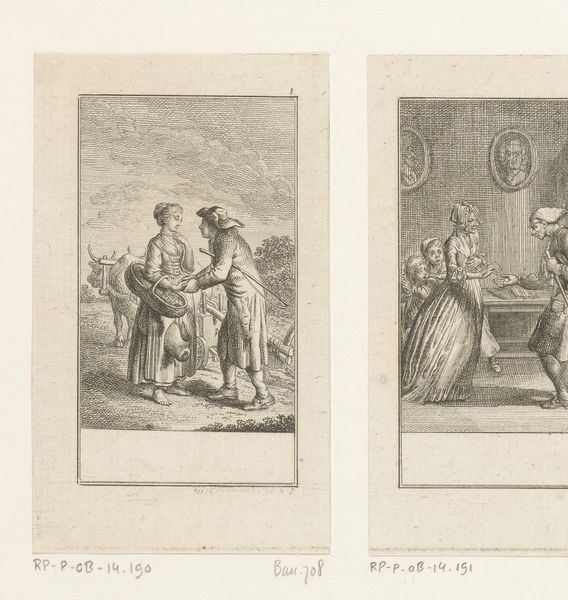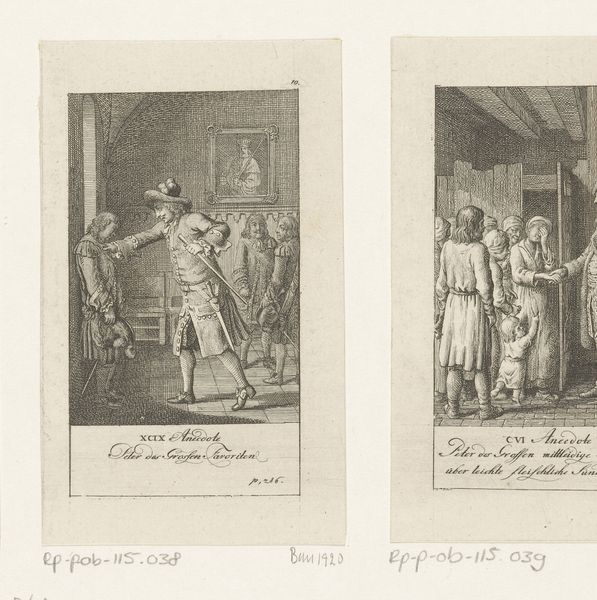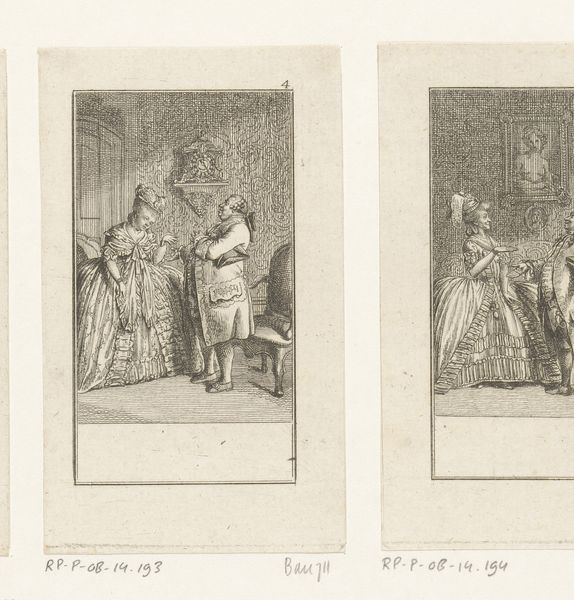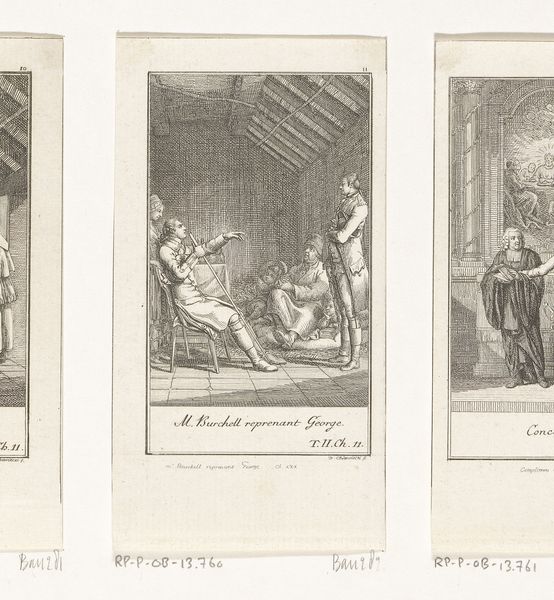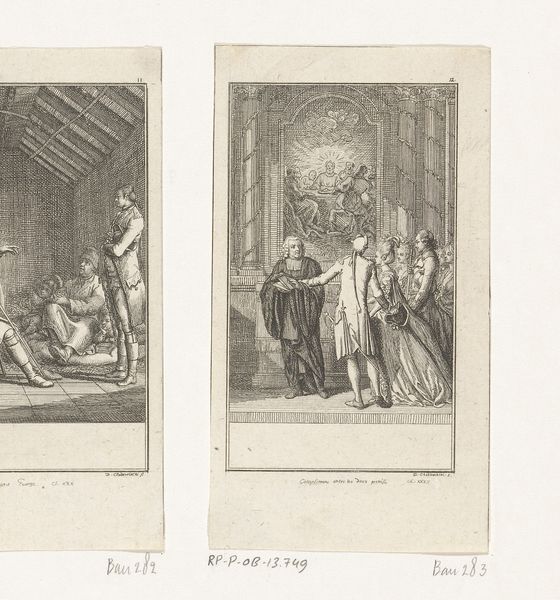
Dimensions: height 105 mm, width 62 mm
Copyright: Rijks Museum: Open Domain
This print by Daniel Nikolaus Chodowiecki, dating from the late 18th century, is made by etching, a process that involves drawing into a prepared metal plate with a sharp needle, then applying acid to bite away the exposed lines. The result is a dense field of tiny marks, which together create the image and tonality. It’s a means of production that allows for great detail, yet also for replication. Etchings like this were widely circulated, part of a burgeoning print culture in the 18th century. Consider how the artist uses line to describe everything from the fall of fabric to facial expression. Look closely at the way he captures the expressions on the characters' faces using only a few precise lines. In the period, prints like this were a primary means of conveying information, satire, and social commentary. They were the newspapers and magazines of their day. Chodowiecki’s choice of etching speaks to the rise of a market economy, and a public sphere hungry for images, rather than unique works of art.
Comments
No comments
Be the first to comment and join the conversation on the ultimate creative platform.
